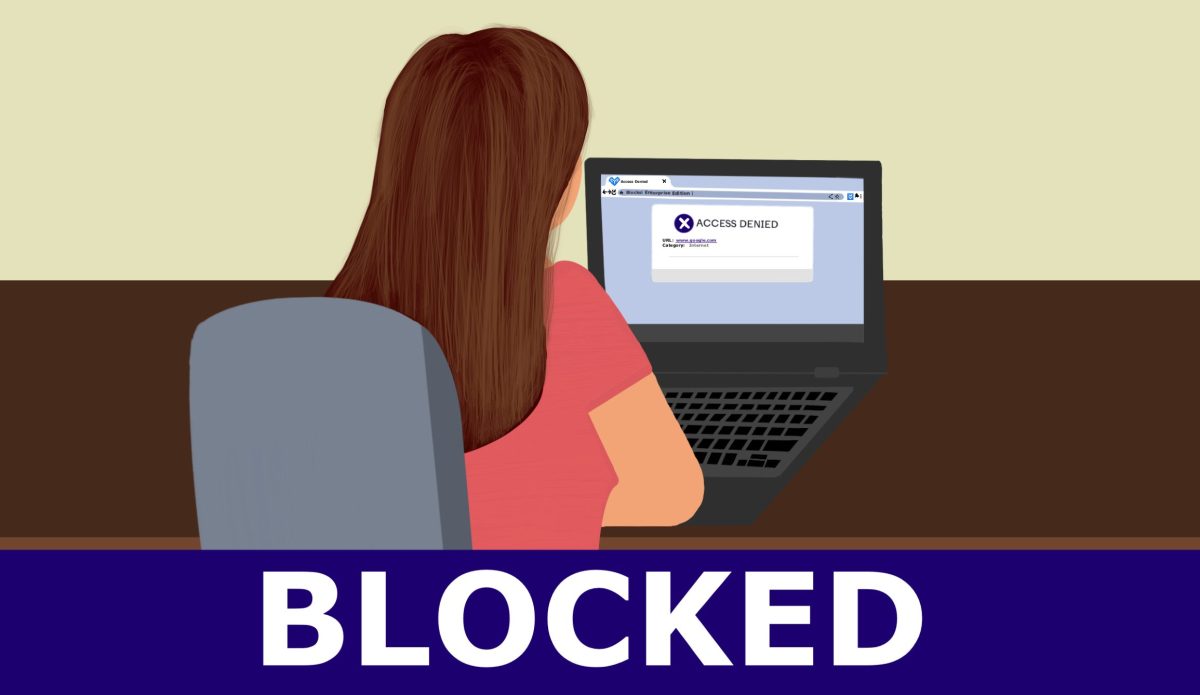The bell rings for students as they walk through the halls, leaving their first class and on to their next, shuffling through the door and to their seats as the late bell chimes. They look up at the board for their assignment. “Write an eight-paragraph essay about one of the following topics: depression, suicide, gun control, marijuana or population control.” As students start their research, it seems like every tab they click gives them a familiar screen pop-up: “blocked.” What starts as a wasted search turns serious; students are called to the office and questioned about their searches as part of a mandatory student safety check-in. This puts the administration in a position to decide where to draw the line between micromanagement and student safety. How exactly can faculty have a program that fits the needs of all of their students?
Nothing can make everyone happy, but the best attempt at managing student online safety so far is Blocksi. The IT department first installed Blocksi on all student devices in 2021. From the tech side, the IT department watches specific content areas that are recommended by Blocksi Analytics; these affect all student devices as the main set of restricted pages. Whether sites are added to or taken off of this block list, the IT department can make changes that affect all devices as long as moderators deem them necessary. Teacher unblocking, or “whitelisting,” works a little differently. Teachers can whitelist certain individual websites or tabs for a short period of time. For example, a history teacher may unblock a certain video on World War I for a class period that may have been blocked otherwise. Teachers can do the same by blocking a website. If a single student is misusing a website, teachers can freeze his or her individual tabs on Chrome, giving teachers specific control over what students can and cannot do online. This, paired with the ability to see every student’s screen, gives teachers all of the tools they need to ensure productivity in the classroom.
For students who don’t abuse their online privileges, it can be frustrating to fight Blocksi every step of the way to access heavy material covered in class. If every student is researching the same topic, it is easy for the teacher to unblock needed websites, but when every student is working on something different, like essay topics, it is difficult for teachers to unblock 100 different websites every class period. What many of the frustrated students fail to understand is that Blocksi provides more services than blocking ads or websites. Blocksi allows students to ask teachers questions directly from their Chromebooks. This serves as a superpower for students who need help but are too afraid to ask for it in front of others. How prominent is Blocksi in everyday student lives, and how frequently do students experience getting blocked? Very often, actually, with a mixture of internet misuses and niche keywords causing innocent searches to get blocked an average of over 800 times per day across the district, according to Ms. Dohanich, Director of Instructional Technology.
As a student just trying to make it through the school day and its various tasks, Blocksi can be very tedious and frustrating to deal with, especially when it makes a hard job that much harder. Students can easily feel frustrated when Blocksi interferes with their work, but they also have to understand the importance of search management. If the dangerous or self harming searches of one student can let a counselor stay informed and intervene, the hardships pale in comparison to the benefits of staff being able to save or change a life. For students who despise micromanagement of their work, the best counter to Blocksi is to stay on task and not give any reasons for management.



